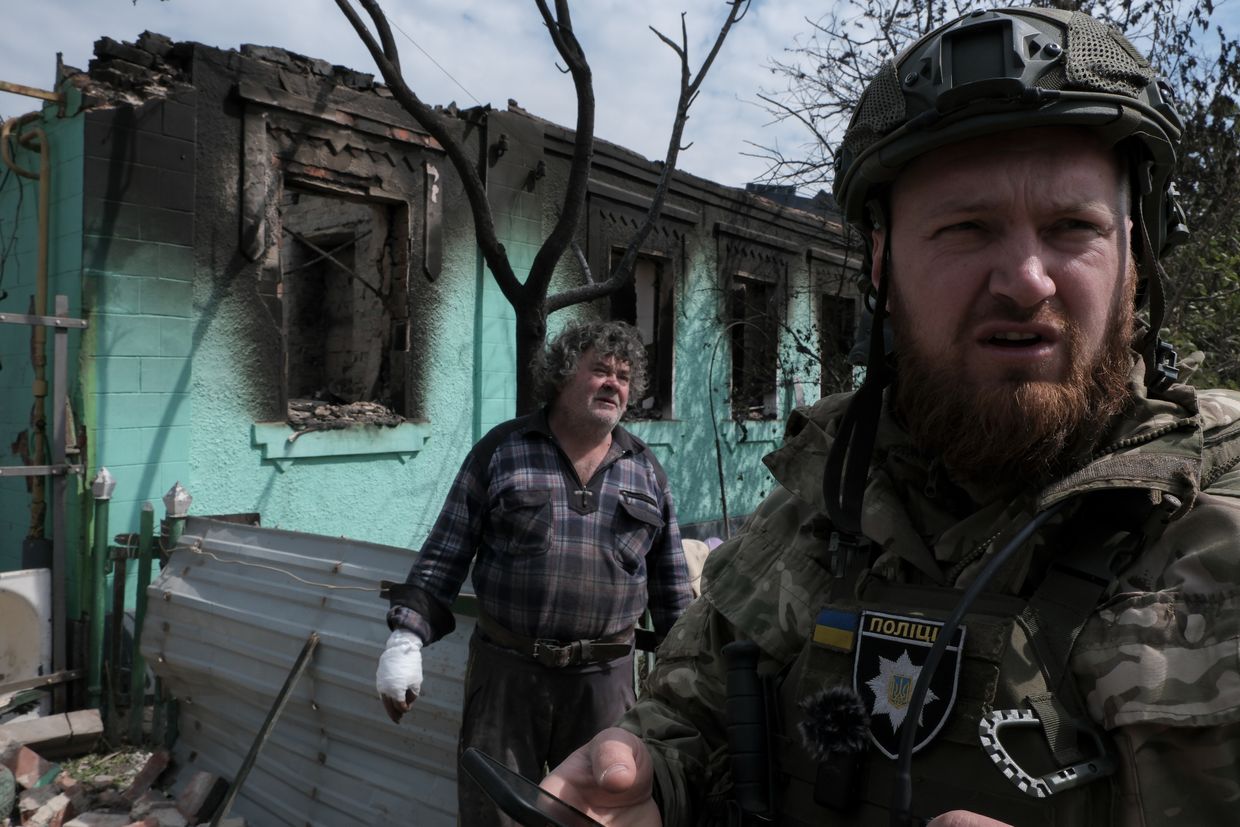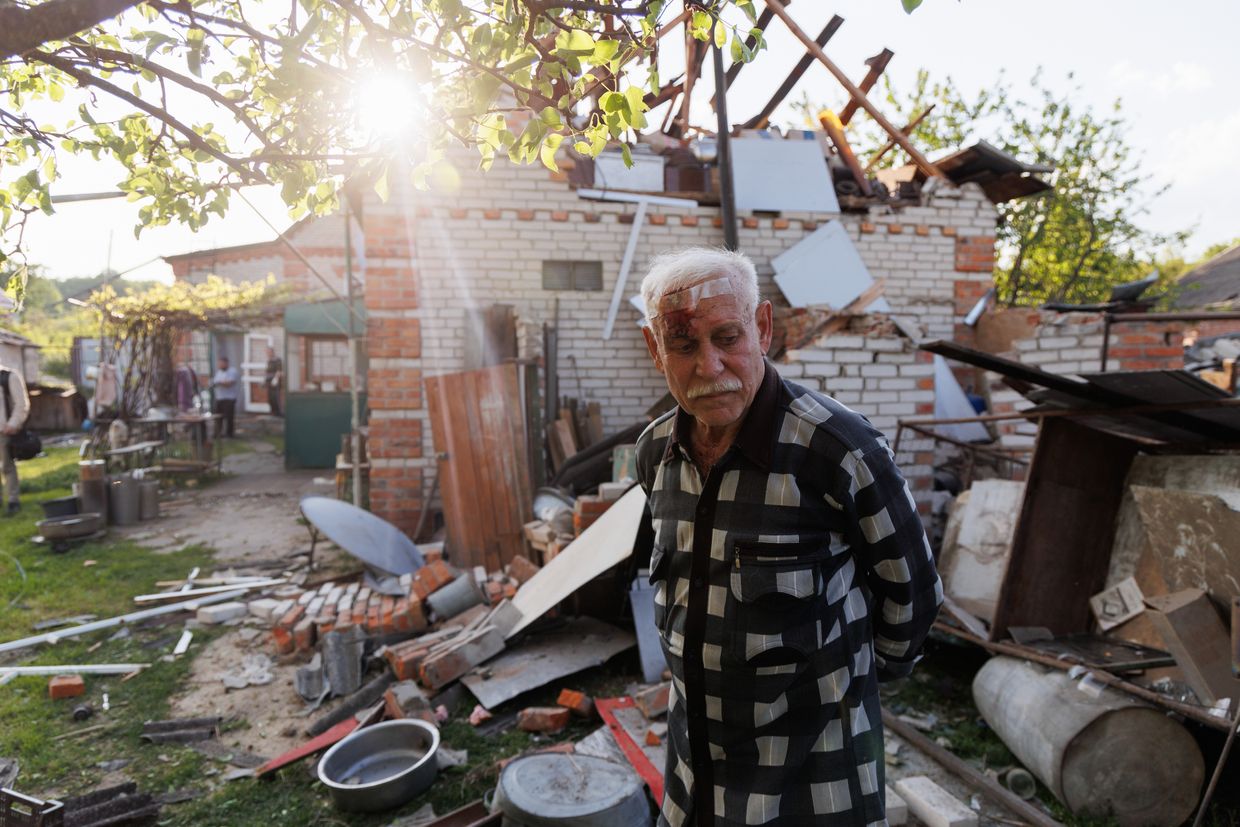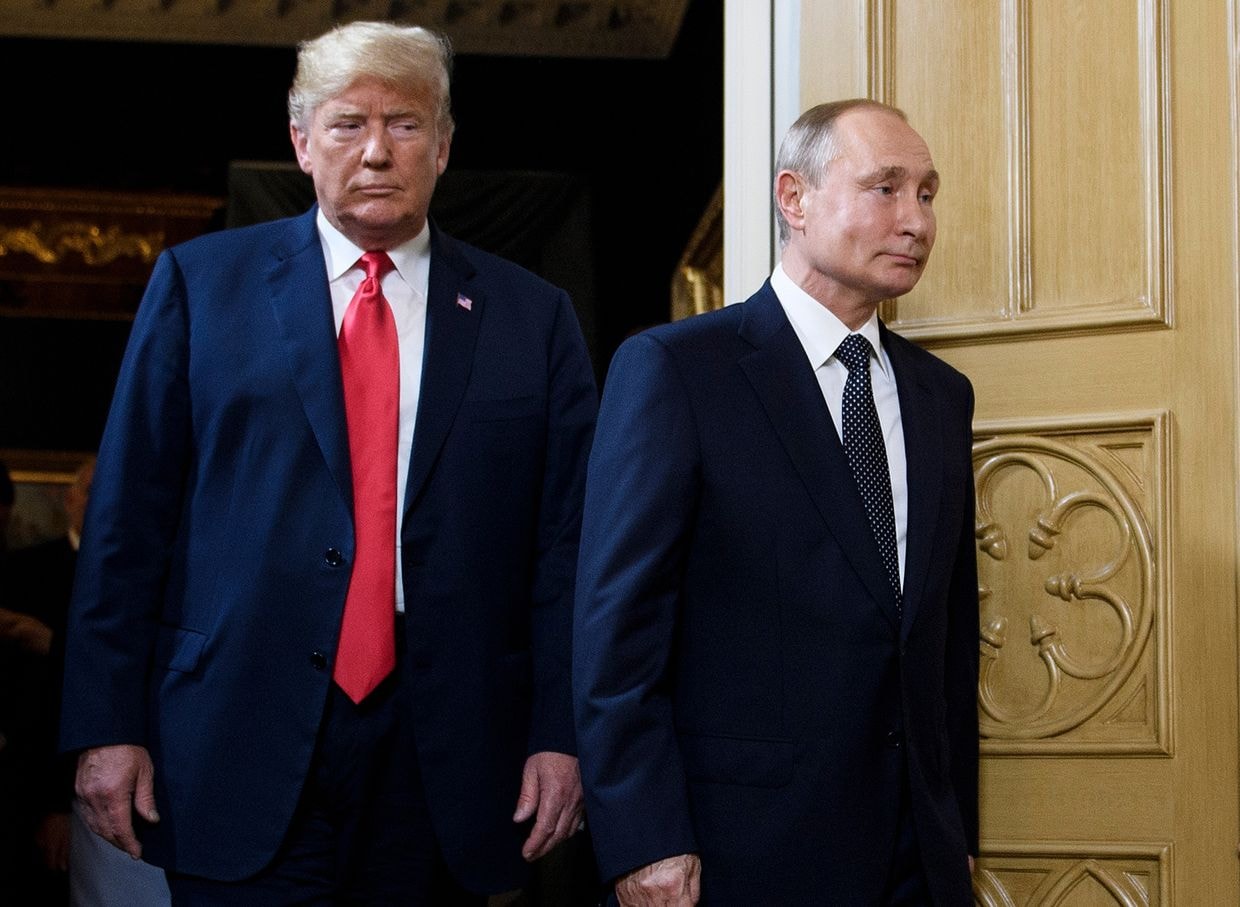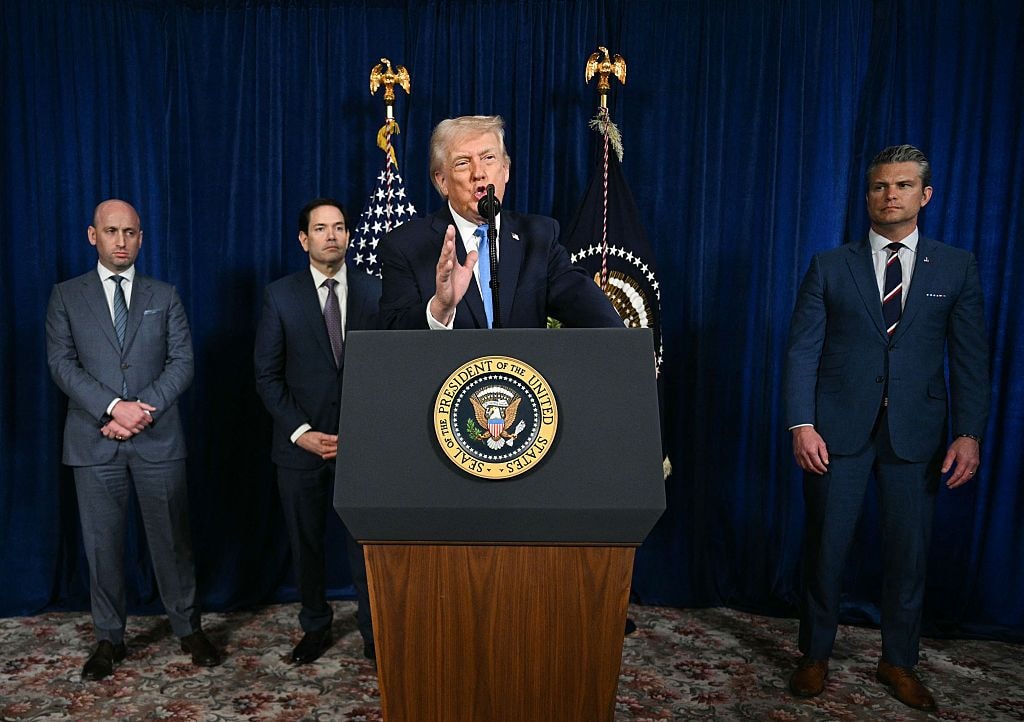Ukraine war latest: 30,000 Russian troops involved in Kharkiv Oblast offensive, Ukrainian official says

Key developments on May 14:
- Security Council secretary: Over 30,000 Russian troops involved in attack on Kharkiv Oblast
- General Staff: Ukrainian soldiers 'change positions' near Lukiantsi village in Kharkiv Oblast
- US State Department does not anticipate Russian breakthrough toward Kharkiv
- Budanov expects Russia to launch new attack on Sumy Oblast
- Blinken emphasizes long-term US security commitment to Ukraine in visit to Kyiv
More than 30,000 Russian troops are carrying out a renewed offensive in Kharkiv Oblast, National Security and Defense Council Secretary Oleksandr Lytvynenko said in an interview with AFP published on May 13.
Russian troops launched a new wave of attacks on May 10, mainly focusing on border settlements in Kharkiv Oblast.
Ukraine's General Staff said on May 13 that Russia has "tactical success" in the fight for Vovchansk, a town in northern Kharkiv Oblast. Urban combat was ongoing in the northern outskirts of the town, Governor Oleh Syniehubov said.
"According to their reports, the military is ready to repel (the attack), it is fighting hard. But there are quite a lot of Russians," Lytvynenko said.
In total, Russia deployed around 50,000 soldiers on the border with Kharkiv Oblast before its offensive, he said.
There is currently no threat of an assault on the city of Kharkiv, Lytvynenko added, echoing earlier statements of the local authorities.
Russian forces failed to take Kharkiv in the first weeks of the full-scale invasion despite the fact that the city lies less than 30 kilometers from the Russian border.
Russia "would need years" to occupy Kharkiv, Oleksandr Pivnenko, the commander of Ukraine's National Guard, said amid the looming threat of renewed attack.
General Staff: Ukrainian soldiers 'change positions' near Lukiantsi village in Kharkiv Oblast
Ukrainian troops "changed positions" near the village of Lukiantsi in Kharkiv Oblast "to save the lives" of their soldiers, Ukraine's General Staff reported on May 14.
The General Staff said that the decision was made due to intense Russian fire and bombardment of Ukrainian positions, adding that "the fighting is ongoing."
Russia launched a new offensive in Kharkiv Oblast on May 10. Lukiantsi is located nearly five kilometers (three miles) south of the Ukrainian-Russian state border.
Vovchansk, a border town roughly 30 kilometers (19 miles) east of Lukiantsi, has become a key target of Russian troops in recent days.
The military reported that Russia had "partially succeeded" near Lukiantsi on May 13. According to the crowd-sourced DeepState monitoring service that tracks changes on the front line, Russian forces occupied the village.
Ukrainian units are repelling a Russian attack in the Shebekino-Vovchansk direction, according to the General Staff. In Vovchansk, the military is inspecting an urban area after reports about fighting on the northern outskirts on May 13.
"The situation is under control," the General Staff said.
Over 7,500 civilians in the north of Kharkiv Oblast have been evacuated from their homes amid heavy fighting in the region, Governor Oleh Syniehubov reported.

US State Department does not anticipate Russian breakthrough toward Kharkiv
The U.S. State Department does "not anticipate any major breakthroughs" by Russia toward Kharkiv, but Russia may "make further advances in the coming weeks," Deputy Spokesperson Vedant Patel said during a press briefing on May 13.
Russian troops launched a new wave of offensive actions on May 10, mainly focusing on borderline settlements in Kharkiv Oblast.
The General Staff of Ukraine's Armed Forces said early on May 13 that Russia had "tactical success" in the battle for Vovchansk, a town located five kilometers (3 miles) from the Russian border and around 50 kilometers (31 miles) northeast of the city of Kharkiv.
Evacuations of civilians in the region continue as Russian troops continue "to advance in certain directions," Kharkiv Oblast Governor Oleh Syniehubov said later on May 13.
Patel told the press that the State Department anticipates "that Russia will attempt to press forward within Kharkiv (Oblast) as well."
"It's possible that Russia will make further advances in the coming weeks," Patel said but added that they do not anticipate any major breakthroughs.
"Over time, the additional influx of U.S. assistance and continued support from partners will enable Ukraine to continue to withstand this kind of aggression."
U.S. President Joe Biden authorized a $400 million military aid package for Ukraine on May 10, after Congress approved a long-awaited $61 billion spending bill for Kyiv in April.
The $400 million defense aid package includes ammunition for Patriot and NASAMS air defenses, Stinger anti-aircraft missiles, HIMARS systems and ammunition, 155 mm and 105 mm artillery shells, and equipment to integrate Western launchers, missiles, and radars with Ukrainian systems.
"Ukraine retains the key advantages in this fight, and its military remains a brave and effective fighting force that is imposing significant costs on the Russian military," Patel said.
Budanov expects Russia to launch new attack on Sumy Oblast
Ukraine's military intelligence chief Kyrylo Budanov expects that after Ukrainian forces stabilize the front in Kharkiv Oblast, Russia will launch a new attack in Sumy Oblast, the New York Times (NYT) reported on May 14.
"The situation is on the edge. Every hour this situation moves toward critical," Budanov told the NYT on May 13 in a video call from a bunker in Kharkiv.
The military intelligence chief nevertheless believes that the Russian assault in Kharkiv Oblast will continue for another three or four days and that the Ukrainian military will be able to strengthen its positions and stabilize the front in the region.
"After which Russian forces are expected to make a hard push in the direction of Sumy, a city about 90 miles to the northwest of Kharkiv," the NYT wrote, citing Budanov.
Budanov's words echoed the statement of Vadym Skibitsky, a military intelligence deputy head, who suggested that a Russian offensive around northeastern Sumy and Kharkiv oblasts may begin at the end of May or early June.
Russian strikes against Sumy Oblast have become increasingly destructive in recent months. Amid intensified attacks, Ukrainian authorities ordered further evacuations from the region.
Budanov said earlier that Ukraine should expect to face a renewed Russian offensive in late spring or early summer, with the offensive intensifying around eastern Donbas region.

Blinken emphasizes long-term US security commitment to Ukraine in visit to Kyiv
U.S. Secretary of State Antony Blinken stressed America's long-term commitment to Ukraine's security during his visit to Kyiv on May 14.
Blinken's comments, which were captured at a press conference the Kyiv Independent attended, lacked concrete details but emphasized that "Ukraine can count on its partners for sustainable, long-term support."
The secretary arrived in Kyiv on a surprise visit earlier on May 14 in a trip reportedly designed to "send a strong signal of reassurance to the Ukrainians who are obviously in a very difficult moment."
Over 30 countries have joined the Group of Seven (G7) Joint Declaration of Support for Ukraine so far. The U.K., Germany, France, Denmark, Italy, Canada, the Netherlands, Finland, and Latvia have already signed bilateral agreements with Kyiv.
Presidential Office head Andriy Yermak said that Ukraine aimed to complete a similar bilateral security agreement with the U.S. in May.
"Under our own ten-year agreement, the United States will support Ukraine's defense and security across a range of essential capabilities: from its air force to its air defense, from drones to demining," Blinken said in Kyiv on May 14.
"If Russia or anyone else were to attack Ukraine, we will work with Ukraine immediately at the highest levels to coordinate how to help you beat back the threat," he added.
Blinken also commented on Ukraine's relations with NATO, an alliance the country seeks to join.
"You have a lot to teach the alliance. NATO will be more secure with your military by our side."
While Blinken also did not offer a specific timeline for Ukraine's accession to NATO, he said that "we will take tangible steps to increase NATO's role in building a resilient, capable Ukrainian force, supporting its ongoing reforms, (and) better integrating Ukraine into the alliance" at an upcoming summit in July.
Countering claims often made by some opponents of U.S. aid for Ukraine in the Republican Party, Blinken said that there is a "plan" for Ukraine to be able to "stand strong on its own two feet militarily, economically, and democratically so that America’s support can transition to more sustainable levels."
"The Ukrainian people want the exact same thing. They do not want to have to rely on others to guarantee their security and prosperity," he said.
In the meantime, the U.S. will keep supplying Ukraine with the weapons it needs to defend itself, Blinken said.
"We know that time is of the essence. That's why just one minute after Congress approved our massive aid package, President (Joe) Biden sent ammunition, armed vehicles, missiles, and air defenses to Ukraine."
In the bigger picture, Blinken said, for Ukraine to improve its ability to have a self-sustaining defense infrastructure, domestic production capabilities will need to increase.
A strong economy that "not only survives but thrives" is a key part of this, he added.
Nonetheless, Ukraine will need to continue its efforts to "root out the scourge of corruption once and for all."
"Winning on the battlefield will prevent Ukraine from becoming part of Russia," Blinken said. "Winning the war against corruption will keep Ukraine from becoming like Russia."
"Ukraine's defenses against corruption have to be just as strong as its military defenses," Blinken said, but acknowledged that Ukraine has made considerable progress in its reforms.














